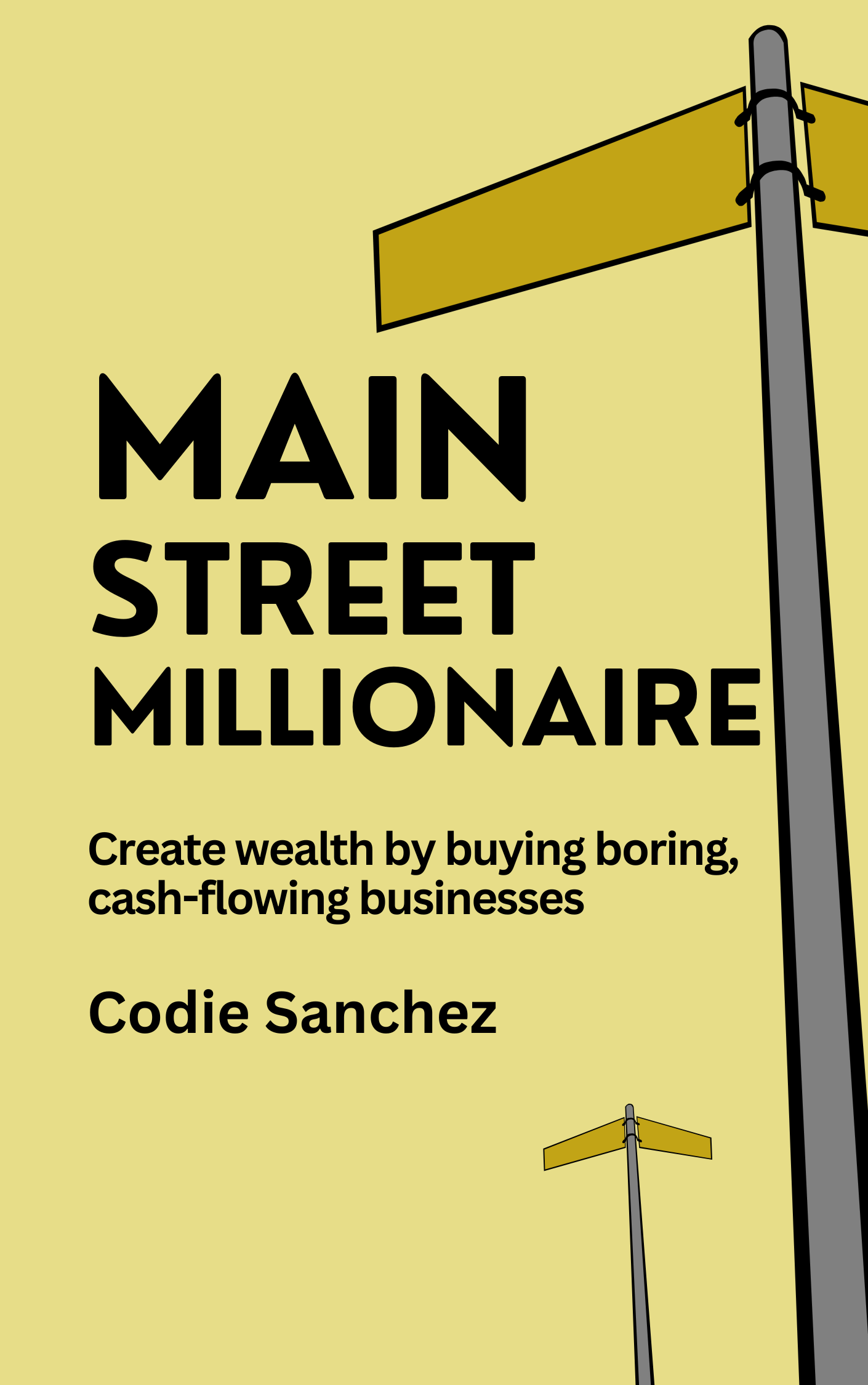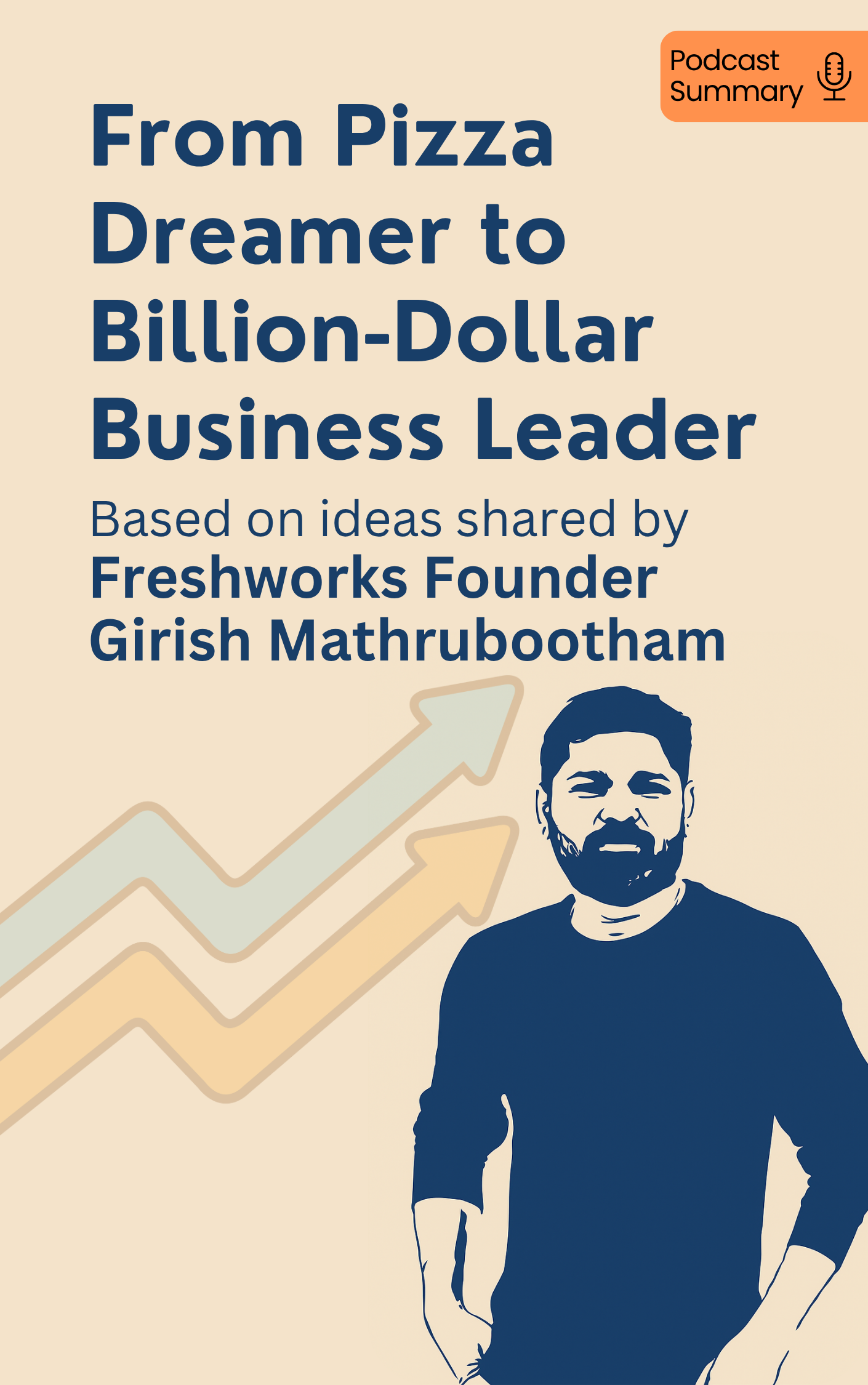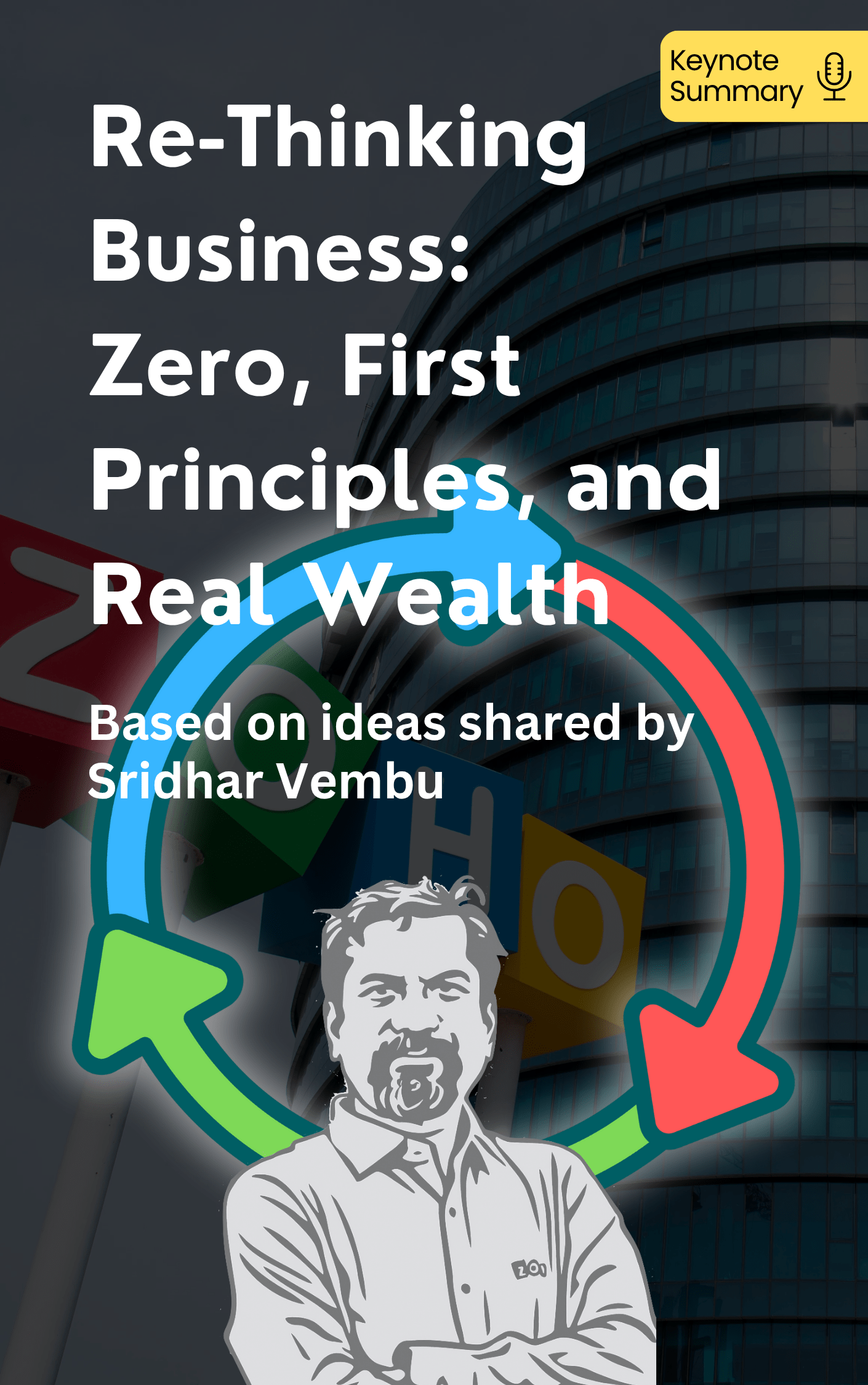Introduction
To all our 9-to-5ers out there, wanna know what freedom tastes like? Chris Guillebeau will show you.
Guillebeau's blueprint comes from studying hundreds of successful "microbusiness" owners who turned passions into profit without huge investments. These everyday people created sustainable livelihoods doing what they love while serving others.
The old rules are broken. Starting your own thing isn't the risky path anymore - working for someone else is. With today's tools, you can test ideas instantly, receive payments globally, and build customer communities before investing heavily. All you need is a laptop and a good idea!
This book gives you the practical, actionable steps you need, to trade conventional employment for a life where they call the shots.
The Rise of Everyday Entrepreneurs
One Monday morning, Michael Hanna put on his suit, went to work, and got fired. Two years later, he was delivering mattresses by bicycle and running a successful shop. He never planned this path - it just happened when life took an unexpected turn.
This story isn't unique. The street merchant of ancient Athens has evolved into today's online entrepreneur, with unprecedented scale and reach, but the core concept remains unchanged: independence through commerce. All around the world, ordinary people are creating their own micro-businesses, often with nothing more than passion and determination. Sarah Young opened a yarn store during an economic downturn. Susannah Conway discovered teaching photography classes was more profitable than journalism. Jen Adrion and Omar Noory began selling custom maps online, eventually quitting their day jobs when business boomed.
What do these success stories have in common? They started with minimal resources - often less than $100 - and without formal business plans. These aren't Silicon Valley wunderkinds or corporate titans. They're regular folks who identified something people wanted and found a way to provide it. Bonus: going from idea to startup can take less than a month!
The biggest obstacles aren't market conditions or competition but our own fears and insecurities. Microbusiness success doesn't require an MBA, venture capital, or special connections. It simply requires taking that first step forward and finding the convergence point where what you love doing overlaps with what you're good at and what people actually need. Let's see how.
Passion Meets Profit
You've heard it before: "Follow your passion!" But be practical, eating pizza isn't going to pay your bills, no matter how passionate you are about mushrooms and black olives. Guillebeau's words, not ours!
You start raking in money at the intersection of three crucial elements: what you love, what you're good at, and what other people actually need. Guillebeau calls this "convergence" – the overlap of the venn diagram where businesses thrive.
Take Mignon Fogarty. Her first podcast about science flopped despite her passion. The audience simply wasn't large enough. Rather than giving up on podcasting entirely, she pivoted to grammar. By matching her communication skills with a topic that had broader appeal and a hungry audience, she created a hit! Right passion with the right audience.
The formula is simple but powerful: (Passion + skill) + (problem + marketplace) = opportunity. This means combining what you love and do well to solve real problems for an existing market.
Ready to find your sweet spot? First, list your genuine passions and skills (even those from unrelated fields). Next, identify problems within those areas that frustrate people enough to pay for solutions (more tips on this in the next section). And lastly, find the overlap. Done! When you hit that convergence point, working doesn't feel like working. And better yet, people are happy to pay you for it.
Also, your business doesn't have to be directly about your passion – it might be something related that helps others pursue that same interest. You love fitness, but not training clients? Go create a workout app or design functional gym merch that inspires people to show up. That’s still your passion, just coming at it from a different angle.
Moving on!
Earning Big in The New World
The world is changing for entrepreneurs. Meaning, you can now pursue freedom for yourself while providing value for others. That's the real secret of the $100 startup. But, to get there? Understand your people.
We all want more of certain things (love, money, acceptance, free time) and less of others (stress, hassle, complexity). Successful businesses focus on delivering more of the good stuff or eliminating the bad stuff - ideally both. Consider Kyle Hepp, who photographs weddings worldwide. Even when couples insist they don't want traditional photos, Kyle sneaks a few anyway AND is always thanked for it later. Why does she do that? Because she understands her clients! Simple.
Understanding your people also means looking beyond their demographics to shared values. The market for great coffee is incredibly crowded, so The Kinetic Koffee Company targeted a specific group: outdoor enthusiasts like cyclists, skiers, and backpackers. they connected their product to people who shared their values and passions, creating an instant community around their brand. So, forget the traditional demographics like age and income. Focus instead on understanding passions, values, and interests.
Just in case you can’t think of any problems your people might be facing, simply ask your potential customers, "What's your biggest problem with ______?" Then create solutions they'll gladly pay for. But, before investing time into creating those solutions, test your ideas. More on that next!
Value-Driven Product Strategy
Before pouring time and resources into a product, make sure people actually want it. Start by crafting a Twitter-length mission statement of 140 characters. Focus on the core benefit you provide rather than describing features: Instead of "I walk dogs," try "I help busy owners feel at ease about their doggos when they're not able to be with them."
Next, ensure you care about the problem you're solving and confirming others care too. Check Google keywords related to your product to verify market size. Address known pain points rather than trying to convince people they have a problem they don't recognize. Also, your solution must be different and better than existing options - not necessarily cheaper.
But, even great products need compelling offers, proper timing and context. And of course this offer must match what customers truly value, not what they claim to value. Airlines repeatedly find that travelers say they want more legroom but consistently book the cheapest flights. Remember, people like to buy but hate being sold to, so frame your offer as an invitation, not a hard sell. And your invite must have a sense of urgency. Example:
Jonathan Fields, a yoga studio owner, offered unlimited classes from September through December for just $180 - essentially four months for the price of 45 days. So, the sooner someone signed up, the more classes they could attend. And, the "get it now before it disappears" urgency drove immediate action. Perfect offer!
Now! It's time to launch.
Taking It To The Streets
Every successful product needs a proper introduction to the world. Like Hollywood builds excitement months before release through trailers and PR campaigns, your small business needs the hype.
A great launch tells a story: hint at what's coming, explain why it matters, reveal the details, build pre-launch excitement, announce availability, update progress, remind about deadlines, and close with gratitude. Launches aren't just about sales but building relationships. When your offer ends, stick to your word - this builds trust for next time.
And now that you're out there, you need the art of promoting your work authentically. Hustling! A hustler is someone who combines work (substance) with talk (promotion). Not the sleazy kind — the one that balances creating with connecting.
Start small. Touch base with 50+ people you know. Send personalized notes about your project without spamming. This initial network becomes your foundation. Then, strengthen this foundation.
Try "strategic giving." Megan Hunt, an Omaha dressmaker, creates custom dresses for her influential clients. Or create excitement through contests or giveaways. Contests generate deeper engagement but require more work. Giveaways bring high participation numbers with minimal effort but create less meaningful connections. Experiment with both to see what works for your audience.
While marketing is crucial, financial management determines business survival. New entrepreneurs often fixate on traditional funding, overlooking creative alternatives.
When Emma Reynolds and Bruce Morton needed $17,000 for their consultancy, conventional loans weren't viable - Emma was only 23, and Bruce was divorcing. Their solution? Get a car loan instead!
So, this was about the money that goes in. What about the money that comes out of it all?
Mind The Profit
There’s just one golden rule: spend as little money as possible and make as much as you can. Spend only on things that directly built your brand and boost sales.
Once your business is running, focus on three principles to maximize profit:
First, base your prices on the benefits you provide, not your costs or time. Gary Leff charges a flat $250 fee for booking reward travel, regardless of whether it takes him ten minutes or two hours. Second, offer a limited range of price options. Instead of selling one product at $87, create a good/better/best structure: $87 for the basic version, $129 for the enhanced version, and $199 for the premium option. This strategy transforms the buyer's question from "Should I buy this?" to "Which version should I buy?" Third, get paid more than once for the same effort. Subscriptions, membership sites, and continuity programs create reliable, recurring revenue. With 1,000 subscribers at $20 monthly, you're generating $240,000 annually.
But your work’s not done yet. Moving on up and increasing your income is your next task. And all you gotta do for that is to make smart tweaks here and there that grow revenue without dramatically increasing your workload.
Focus your tweaking efforts on three primary areas. First, increase traffic – get more people looking at your offer. Second, boost your conversion rate – turn more browsers into buyers. Third, increase your average sale price. Meaning, get more value from each transaction.
Let’s talk expansion, now!
Beyond the One-Person Show
So, now you're making some money, serving clients, and feeling good about your independence. But the moment you stop, the income stops too. Then what?
Then, you strategically leverage your efforts. Your options? Partnerships, outsourcing, or affiliate programs. The goal remains the same: expanding your impact without sacrificing the freedom that likely drew you to entrepreneurship in the first place.
Good partnerships create businesses at least 33% larger than what the individuals could achieve separately. Create synergy. Before partnering, consider: How will money be divided? What are each partner's responsibilities? How will information be shared? This forms the foundation of your One-Page Partnership Agreement.
For outsourcing, your decision should depend on your specific business and personal preferences. For repetitive tasks, outsourcing might make sense. For customer relationships, maybe not. Find which arrangement gives you your freedom.
Another path to leverage is creating an affiliate program - enlisting others to promote your products for a commission. Successful affiliates create genuine connections between their audiences and your business through honest reviews and added value.
Our tip? As your business grows beyond you, regular evaluation becomes more crucial.
Focus your energy on profitable activities rather than trying to rescue underperforming areas. Review your sales copy regularly to ensure it still connects with customers. Regular increases should be part of your business rhythm. Also, consider how you are marketing to existing customers. These people already trust you - meeting more of their needs is far easier than finding new customers.
So, that’s that. You have your freedom and a successful business. But, we’re still not done. Cause this level of success needs maintenance.
Making Success Sustainable
Success brings choices. As your small venture grows, you'll face a crossroads that defines your future freedom.
Tsilli Pines discovered this when her ketubah business became successful enough to quit her day job. The sudden freedom wasn't what she expected. Her creativity actually suffered under the pressure of full-time entrepreneurship. Her solution? A balanced approach - returning part-time to her design firm while maintaining her business.
Tsilli's journey highlights an important truth: entrepreneurs don't need to be all-or-nothing risk-takers. Her story leads into what Guillebeau identifies as the critical choice that every successful business owner eventually faces: Where to take your growing venture. Cherie Ve Ard deliberately stays small with her mobile app business, prioritizing quality of life over expansion. Tom Bihn took the "medium" path, building a factory with 20+ employees but refusing big retail partnerships to maintain control and brand integrity.
These entrepreneurs succeeded through different paths, but they share a common practice: focused improvement. To find your own sustainable path, spend 45 minutes each morning without internet access, focusing exclusively on business improvement. Work on new products, review pricing, address long-standing problems, or initiate customer communication. Be proactive rather than reactive. Couple this with monitoring just one or two essential metrics daily - sales, leads, or conversion rates - while saving deeper financial reviews for monthly sessions. These daily practices help you create growth that aligns your business with your personal vision of freedom, rather than spending all your time responding to issues.
Take a moment here and imagine: what if after all this, you still “fail”. Then what?
When the Roof Caves In
Ever stood on a collapsing roof in the Michigan winter? John T. Unger has. Surprisingly, he calls it the third best thing that ever happened to his business. That disaster led to a $10,000 commission and property acquisition. Point being, setbacks can be stepping stones. What you think is "failure" might just be the boost you needed!
This fear of failure keeps many would-be entrepreneurs stuck. What scares them? External concerns like market changes and competition exist, but deeper identity questions often loom larger. Will the passion fade? Will success change me? Combat them with perspective. As one business owner put it: "If nobody was going to die in the worst-case scenario, what was I so afraid of?"
The best antidote to fear is action. Guillebeau suggests using one-page business plans and quick-start guides to launch without waiting. Getting your first sale quickly matters more than perfection - then improve what's working and ignore what isn't. And stop waiting for permission. Your move doesn't need universal approval.
Every entrepreneur has that moment when they KNEW success was possible—Gary Leff receiving his first payment, Kyle Hepp landing a $5,000 international booking. You'll have your moment one day. Document it! These reference points become powerful anchors during rough patches.
The key takeaway from all this isn't just persistence! It's recognizing that failure is overrated. While you might face setbacks, success is equally possible. The biggest battle isn't against competition - it's against your own fear and inertia. The good news? You control both completely.










